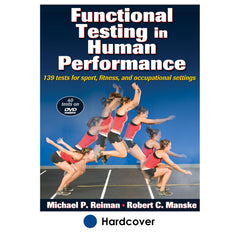- Purpose: To assess multiplanar trunk stability while a combined upper and lower extremity motion is performed.
- Equipment: 2 x 6.
Procedure
1. Position the client in a quadruped position with shoulders and hips at 90° relative to the upper torso. Bilateral knees are positioned at 90° and ankles remain dorsiflexed.
2. Place the 2 x 6 between the knees and hands so that they are in contact with the board.
3. Instruct the client to flex the shoulder and extend the same-side hip and knee (first position).
4. Have the client raise the leg and hand enough to clear the testing surface by approximately 6 in. (15 cm).
5. Ensure that the lifted extremities remain in the same plane as the 2 x 6.
6. Instruct the client to flex the same shoulder and knee so that they touch (second position).
7. Perform the assessment bilaterally for up to three repetitions.
8. If a III is not attained, have the client perform a diagonal pattern using the opposite shoulder and hip in the same manner as already described.




